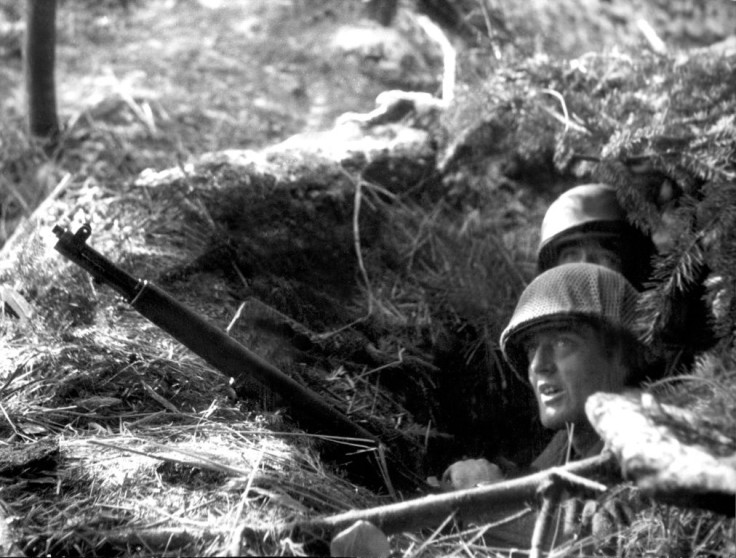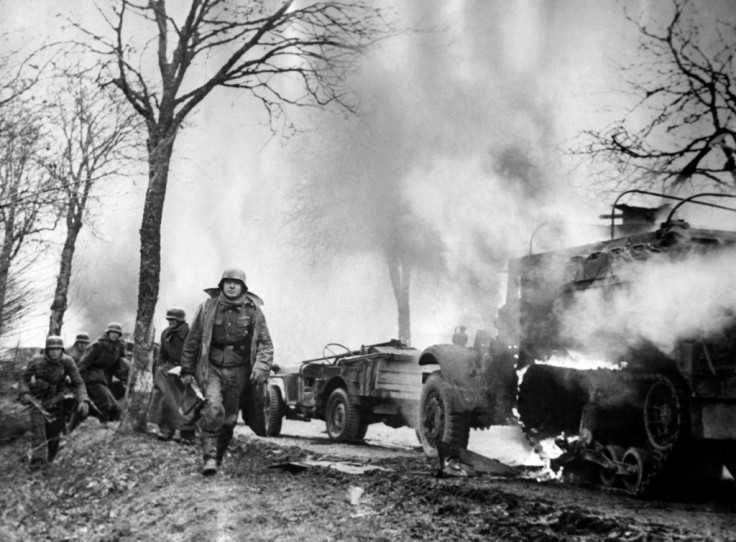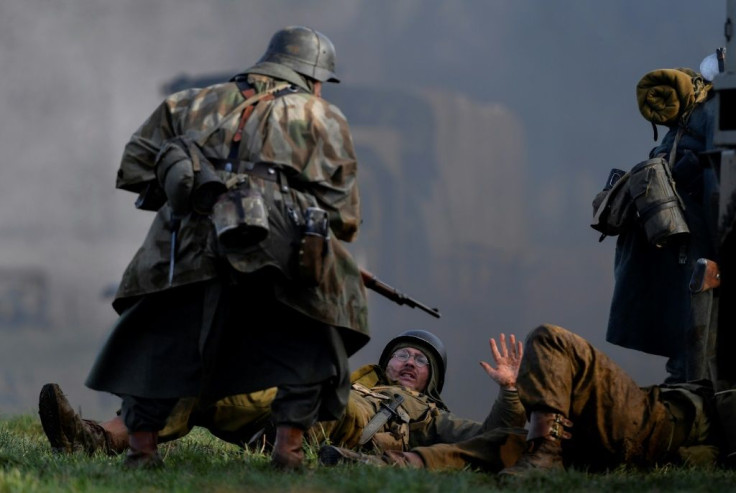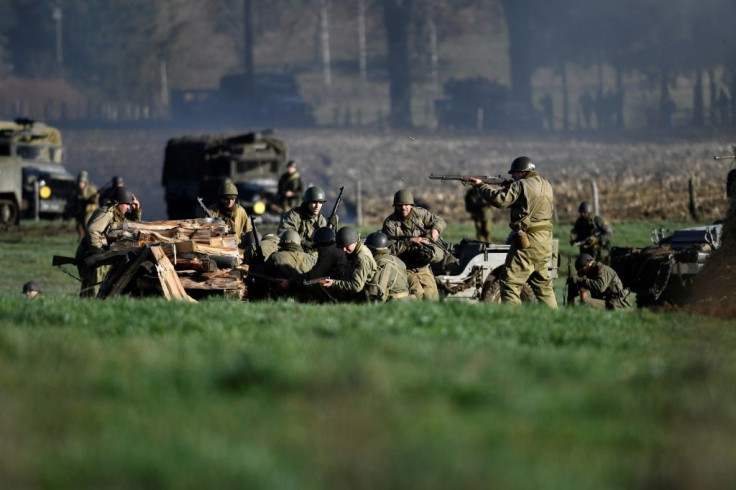Battle Of The Bulge Heroes Remembered 75 Years On

Seventy-five years after the snow bound hills of the Ardennes saw the bloody turning point of World War II, surviving veterans gathered for perhaps the last time.
On Monday, they were honoured by a king, a grand duke, two presidents, two prime ministers and a US defence chief at solemn ceremonies in both Belgium and Luxembourg.
The Battle of the Bulge was the last German offensive of the war, and the Siege of Bastogne was the scene of a heroic and now famous defence by American paratroopers.
"Outnumbered nearly five-to-one, lacking cold-weather gear, and short on food, ammunition, and medical supplies, the American paratroopers refused to give up," US defence secretary Mark Esper said.
"Many of these men perished amid the thundering forests of the Ardennes," said Esper, himself a more recent combat veteran of the 101st Airborne, which in 1944 held the line bravely.
"And since the battlefield fell silent long ago, most of the veterans of that era have passed. However, we are blessed to have with us today a group of heroes who still walk among us."

Today, Belgium, the United States and Germany are allies, and Germany's President Frank-Walter Steinmeier took part at a memorial at Mardasson in chill fog and driving rain.
"It is with sadness that I bow my head to all these dead ... victims of the hate and fury that was born in my country," said Steinmeier, accepting German responsibility for unleashing the war.
Veterans, historians and military enthusiasts marked the now legendary close-quarters battle of Bastogne with a spectacular series of weekend re-enactments ahead of Monday's ceremonies.

Bastogne's rescue in late December 1944 by General George "Old Blood and Guts" Patton helped seal his reputation as an American military giant.
But the out-gunned paratroopers of the 101st Airborne -- who held the pocket for a week against advancing German armour -- also claim a share of the glory.
Esper was an officer of these "Screaming Eagles" in the 1991 Gulf War, but on Monday he paid tribute to his comrades from an era that is passing from memory into history.

The Belgian town of Bastogne, close to the Luxembourg border in the Ardennes hills, is the focus of the commemoration, as it was of the fighting.
On December 16, 1944, German forces -- which had been falling back before the Allied advance from France since June's D-Day landings -- counter-attacked.

Their goal was to seize the port of Antwerp to deny it to Allied resupply ships, and five of their roads north converged on the small Belgian town.
By December 20, the battle-hardened but lightly armed US paratroopers were surrounded and a German Panzer general demanded their surrender.
"Nuts!" was the one-word reply from the US commander, and the ensuing week-long siege lasted until Patton's Third Army came to the rescue.
On Monday, Philippe, King of the Belgians, and Belgium's prime minister Sophie Wilmes were joined at the Mardasson Memorial by Esper and Steinmeier, and senior envoys from Britain, Canada and France.
The king praised the courage and "determination of our liberators" and recalled the need to always oppose the racist ideology embodied by Nazism.
In the afternoon, the convoy crossed the border to the Luxembourg Military Cemetery and Memorial in Hamm, Patton's last resting place, received by the duchy's Grand Duke Henri and Prime Minister Xavier Bettel.
General Patton died in a road accident during the 1945 occupation of a defeated Germany, but was buried in the Ardennes with comrades from his famous victory.
His granddaughter Helen Patton has spent the days leading up to the memorial greeting veterans on battlefield visits.
The then 59-year-old Patton reached the summit of his glory when he relieved Bastogne and the survivors of the 18,000 encircled men.
The overall Battle of the Bulge would rage across the Ardennes for six weeks -- drawing in 600,000 American and 25,000 British troops against 400,000 Germans -- until the Allies prevailed in January 1945.
Between 15,000 and 20,000 German troops died, against between 10,000 and 19,000 Americans.
And 3,000 Belgian civilians perished under artillery bombardments or in massacres carried out by the Waffen-SS in villages like Houffalize.
The Bastogne fighting has been recounted by veterans interviewed for the book and television series "Band of Brothers" and entered US military folklore.
But 75 years on, the number of former combatants and witnesses who can attend ceremonies is declining, and Belgium's War Heritage Institute has invited as many as they still can.
© Copyright AFP 2024. All rights reserved.




















